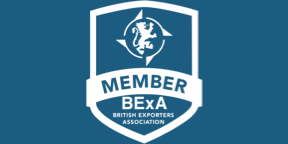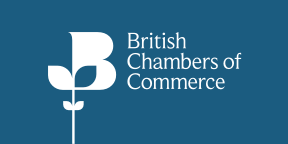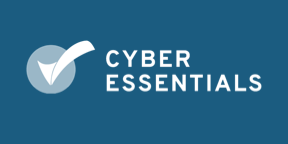Temporary Admission and making use of Returned Goods Relief
BY:
Gail Leeson
7 October 2021
SHARE:

There are over 50 Customs Procedure Codes that allow import to Temporary Admission. Using the correct code takes skill and appropriate awareness and training. It is so very important to get it right and remember it isn’t whether an HMRC audit will happen but WHEN it will happen.
Best practice to be compliant from the get-go!
Trading with the EU is not as simple as it was.
For any company unfamiliar with HMRC cross-border methods or are finding the Customs Guidance challenging to put into working practice, it is becoming increasingly important to access good quality information.
There has been a misconception that an EU UK trade agreement would mean that cross-border trade would essentially remain as it was before the UK left the EU.
Even after the TCA publication, there is still confusion as to how the agreement should facilitate cross-border trade.
What is of note is that the agreement does not support the cross-border movement of unaltered goods backwards and forwards between GB and the EU member states. Traders now need to consider employing customs procedures to support any temporary import of goods, or for goods being returned unchanged from the EU.
Importing to Temporary Admission
There is plenty of choice when it comes to Customs procedures that enable a temporary import.
The important thing is to understand what it is you are importing and the reason for importing to temporary admission, in Customs terms. Employing the correct procedure is essential.
Customs Procedure Code descriptions and definitions can appear straight forward (if you know where to find them). What is important to understand is that there can be substantial compliance requirements behind each of the processes, and that evidencing that compliance will be vital at HMRC Audit. Duty and VAT may be chargeable at that point if the correct data is absent, or the incorrect CPC used.
It is so very important to Get It Right and remember it isn’t whether an HMRC audit will happen but WHEN it will happen. Best practice to be compliant from the get-go!
Top Tips
• Clearly understand the reason behind importing to Temporary Admission
• Accurately classify the goods for import. Accuracy at the point of import is vital.
• Is VAT payable, or are duty and VAT subject to suspension? Each procedure is different, and this may affect your decision as which to use.
• Give clear instructions to your agent to import to a Temporary Admission procedure.
Recording the correct Customs Procedure Code at import and a corresponding export CPC code at reexport is essential, or the procedure will not work.
• Make sure that you will be able to comply with the procedure compliance requirements.
Things to Consider
The reason the goods are being imported
Example:
Temporary Admission can cover goods imported for evaluation but does not cover the goods being subject to processing.
• Are the imported goods themselves being evaluated, or being imported to test other equipment, then being re-exported after being used for that test?
• Identification of that reason for import in HMRC terms will be important when selecting the correct customs procedure code.
• Check:
Inward Processing may be more appropriate or even essential rather than using Temporary Admission. Inward Processing necessitates the goods themselves undergoing a process.
• What evidence will be needed at re-export to discharge the obligations from the procedure?
Make sure that you will have this evidence to discharge from Temporary Admission on re-export.
Once familiar with temporary admission there is a lot of money to be saved. What is needed is a firm grasp of the compliance requirement and the confidence to implement the compliance processes effectively.
The same can be said of importing using Returned Goods Relief.
RGR is a customs procedure that could be much more widely used at import for goods being returned after temporary or unsatisfactory export, saving UK businesses a great deal of money in the process.
An inexperienced importer may import returning goods to home use (CPC 40 00 000) paying duty on goods returned under warranty as an example. A little more understanding of HMRC procedures can go a long way to saving import duties, and where applicable, VAT
Returned Goods Relief (RGR) CPC 61 23 F01
Returned Goods Relief is an invaluable mechanism when receiving goods returned after export. Goods must be in an unaltered state. This unaltered state would include goods being returned as unserviceable, unwanted or after temporary export.
Top Tips
• RGR may be implemented should goods be returned to the UK within 3 years of original export. The goods must have been in free-circulation in the UK before the original export (that is – in the UK duty and VAT having been paid)
This 3-year period can be extended to 10 years with HRMC approval
• It is not to be returned for goods reimported after repair
Example: Goods being imported for return to the manufacturer as faulty.
Method
Import to RGR using the original export entry as evidence at import. Add the export entry number into box 44. This will support use of the CPC.
• The paperwork must correspond. Look at the serial numbers declared on the commercial paperwork. Are the serial numbers the same?
Do you have a copy of the customs entry for the original export in the file to support this given import?
Linking the export paperwork to the import paperwork is essential.
HMRC like slick.
• The evidence of export can be supplied by another company.
If a business is importing goods for repair as original manufacturer rather than original export supplier, that manufacturing business may use RGR if able to evidence the original export.
Method:
A copy of the original export declaration may be used to support use of the procedure, in the form of a redacted declaration for example. The exported goods must be clearly identified as those goods being returned to you for import.
While you are here you may be interested in some Strong & Herd LLP training courses related to this topic, we offer a wide range of high quality training courses to support all importing and exporting activities.
OneCall™ Email assistance as and when required; A one-call solution for all your import, export and customs enquiries. Export help. Import help. Customs help.
Stay informed about customs and international trade matters by subscribing to our OneCall™ service. This comprehensive offering includes a dedicated email helpline for support, timely practical updates direct to your inbox (Did You Know?), monthly UK Customs & Trade Briefings and access to an interactive members' area with an exclusive community for our subscribers.
International Trade Updates & Spotlight Newsletter
Subscribe to our free information emails covering international trade topics...









